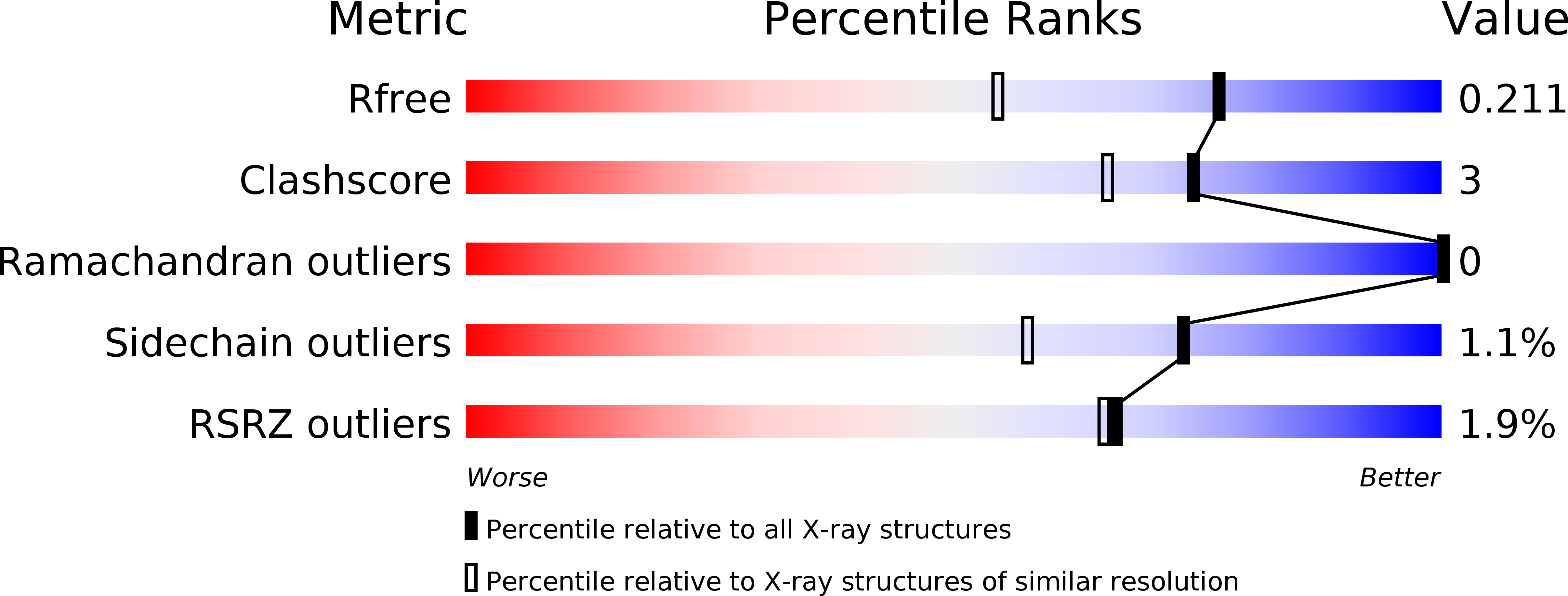Directed evolution of a thermostable quorum-quenching lactonase from the amidohydrolase superfamily
Chow, J.Y., Xue, B., Lee, K.H., Tung, A., Wu, L., Robinson, R.C., Yew, W.S.(2010) J Biol Chem 285: 40911-40920
- PubMed: 20980257
- DOI: https://doi.org/10.1074/jbc.M110.177139
- Primary Citation of Related Structures:
3OJG - PubMed Abstract:
A thermostable quorum-quenching lactonase from Geobacillus kaustophilus HTA426 (GI: 56420041) was used as an initial template for in vitro directed evolution experiments. This enzyme belongs to the phosphotriesterase-like lactonase (PLL) group of enzymes within the amidohydrolase superfamily that hydrolyze N-acylhomoserine lactones (AHLs) that are involved in virulence pathways of quorum-sensing pathogenic bacteria. Here we have determined the N-butyryl-L-homoserine lactone-liganded structure of the catalytically inactive D266N mutant of this enzyme to a resolution of 1.6 ?. Using a tunable, bioluminescence-based quorum-quenching molecular circuit, the catalytic efficiency was enhanced, and the AHL substrate range increased through two point mutations on the loops at the C-terminal ends of the third and seventh ¦Â-strands. This E101N/R230I mutant had an increased value of k(cat)/K(m) of 72-fold toward 3-oxo-N-dodecanoyl-L-homoserine lactone. The evolved mutant also exhibited lactonase activity toward N-butyryl-L-homoserine lactone, an AHL that was previously not hydrolyzed by the wild-type enzyme. Both the purified wild-type and mutant enzymes contain a mixture of zinc and iron and are colored purple and brown, respectively, at high concentrations. The origin of this coloration is suggested to be because of a charge transfer complex involving the ¦Â-cation and Tyr-99 within the enzyme active site. Modulation of the charge transfer complex alters the lactonase activity of the mutant enzymes and is reflected in enzyme coloration changes. We attribute the observed enhancement in catalytic reactivity of the evolved enzyme to favorable modulations of the active site architecture toward productive geometries required for chemical catalysis.
Organizational Affiliation:
Department of Biochemistry, Yong Loo Lin School of Medicine, National University of Singapore, 8 Medical Drive, Singapore 117597.


















